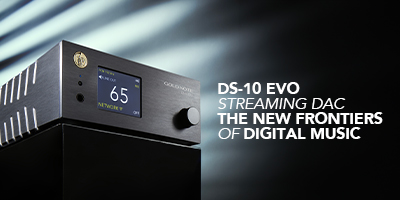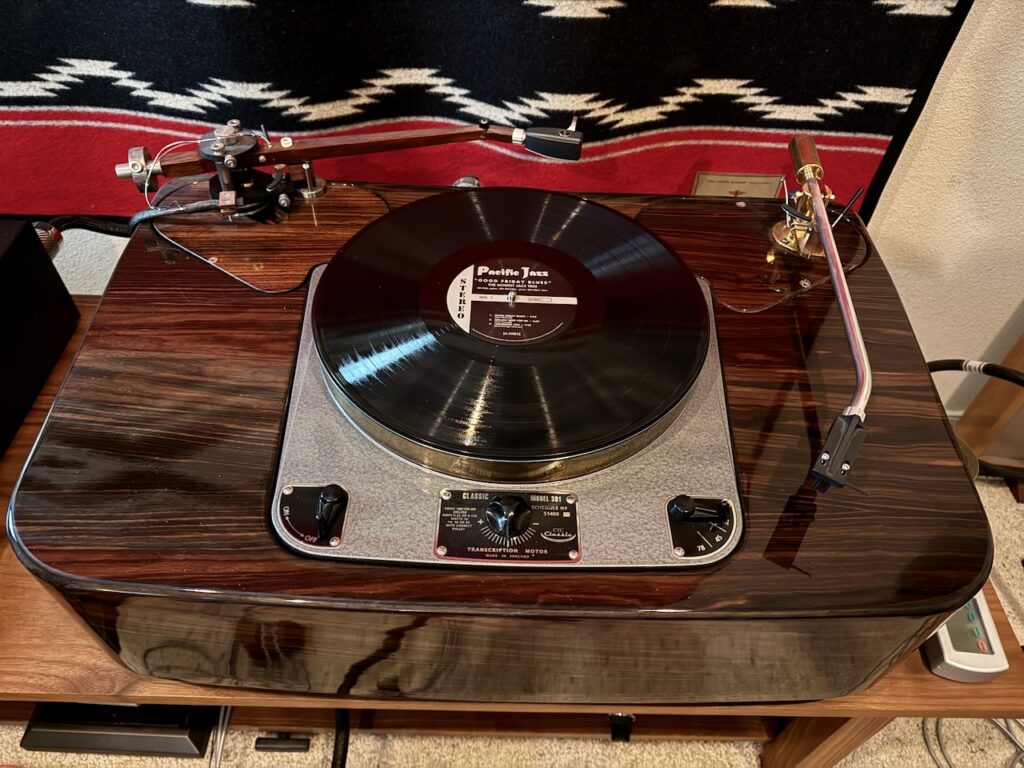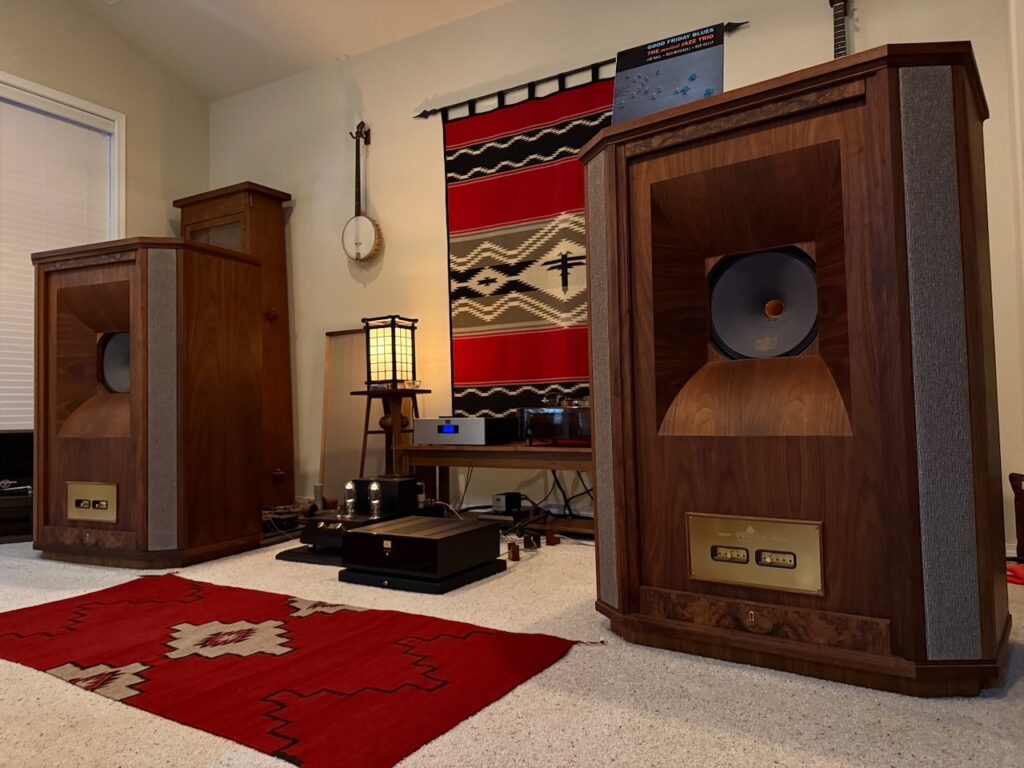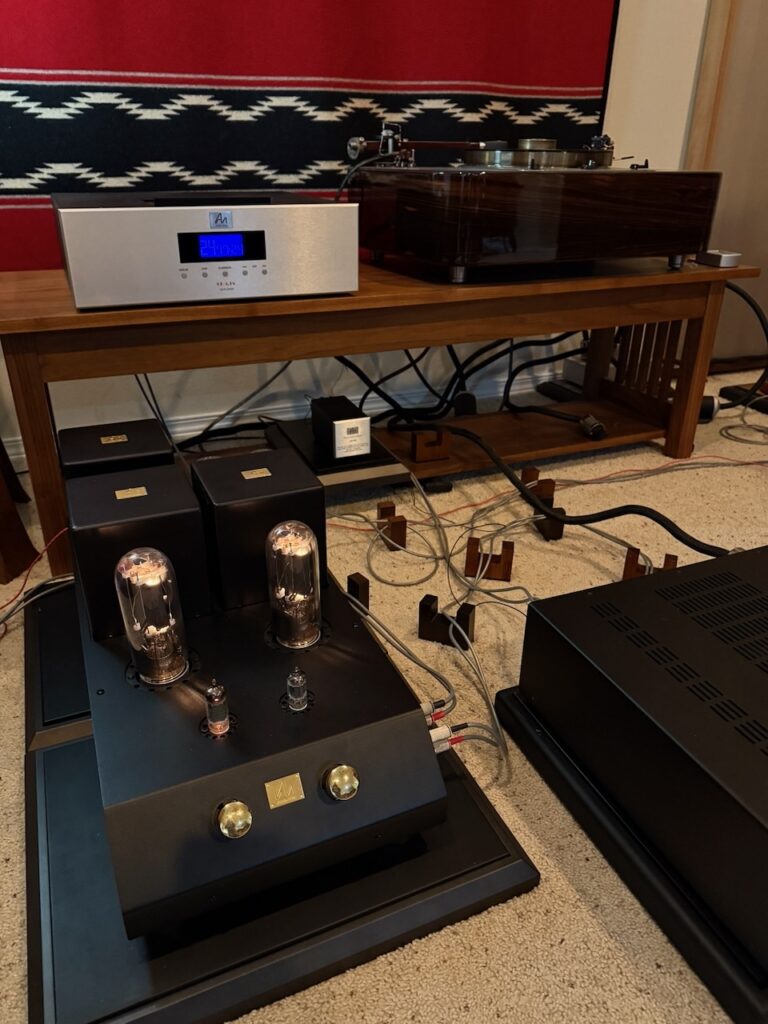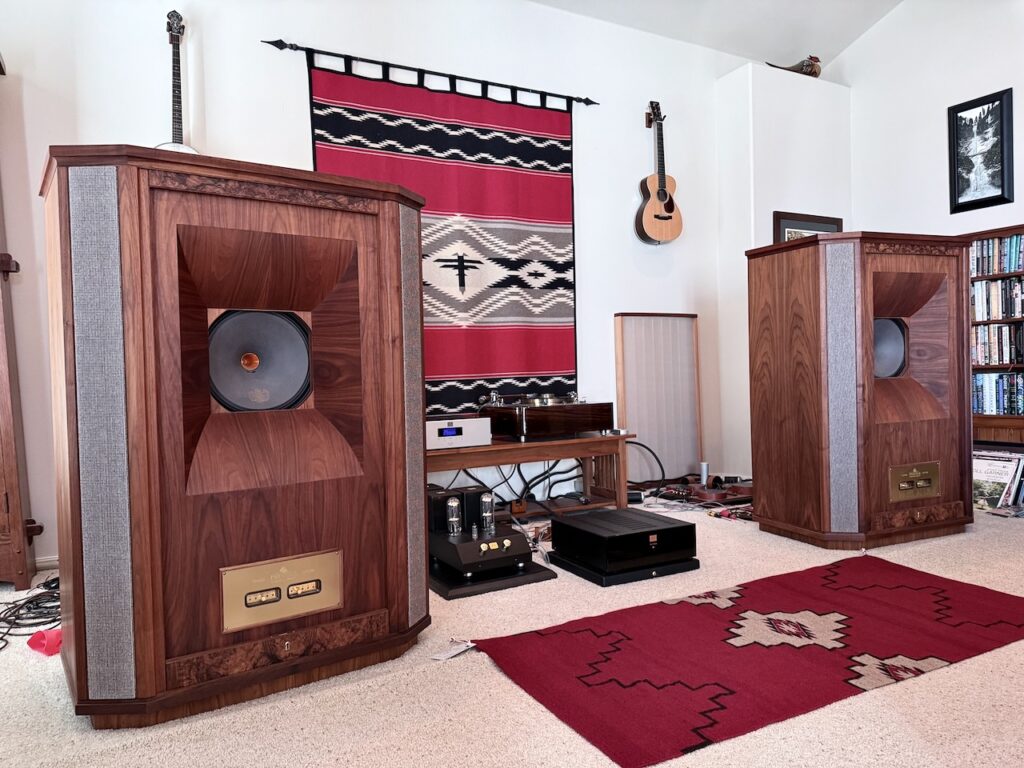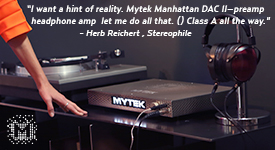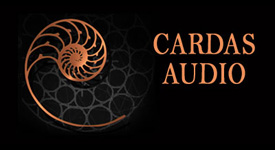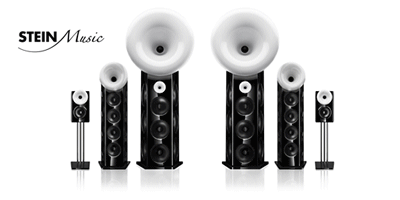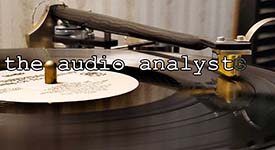Greetings friends, I hope you are well! 🙂
I've really been into spinning vinyl the last few weeks. There's so much good new & used vinyl to be had these days, it's been a real treat to add records to my vinyl library.
The fidelity of feelings.
While spinning said vinyl I've been pondering what I have been hearing, and more importantly, feeling, while listening to vinyl with Peter Qvortrup's Audio Note (UK) Level Four components: the combination of the Tomei 211 SET integrated amp, the M6 RIAA phono preamp, and the AN-S4 step-up transformer (use the "search" function on Jeff's Place to find more to read about these components).
There's a performance attribute, or attributes, happening with the music through these Level Four components that is / are way above and beyond the norm, and it has really got me to pondering aspects of audio performance that are not often addressed in print, and indeed, I have struggled to adequately articulate them to myself, and to you, dear readers.
The main reason that those of us in the HiFi press haven't addressed this aspect of performance more is because, in my experience, there are very few components that are capable of performing at this level in this particular category of performance. If you haven't heard it before, it's hard to know about it and articulate it.
Now these Level Four audio components are relatively expensive, and their relative rarity in the wild means that not a lot of listeners have heard them, and particularly in a context where they are performing at the level they are capable of.
But put aside the cost aspect for a moment, because what they do is so important to music listening, it creates what I think should become an important aspect of evaluating audio performance at any price point.
You know how when you're deep into one of those late night listening sessions, you put on an album, and you are bowled over emotionally by the music you're listening to?
Now imagine dialing up the intensity of that experience by a factor of ten, and that the experience isn't limited to an occasional late night session, but that it occurs with every album you listen to, regardless of the sound quality of the album.
That's the experience I've been having with these Level Four components. It's intoxicating to say the least.
When us HiFi writers refer to "high-fidelity" in articles, we're generally talking about audio performance in terms of sound quality and / or visuospatial performance (soundstage, imaging, etc.). It's the audio "orthodox" perspective.
What has been impressed upon me is that "high-fidelity" also should be generally understood to include "fidelity to feeling".
There is a range of performance I've observed in audio components / systems, in terms of fidelity, that ranges from high to low. While that certainly applies to sound quality, it also applies to the fidelity of feelings that an audio component / system is capable of conveying to the listener.
Some audio components / systems are low-fidelity when it comes the conveying the fidelity of feeling to the listener, most are of medium-fidelity, and a very few are of high-fidelity. At least that's been my experience.
Note that the fidelity of feeling is an alternate performance universe compared to the fidelity of sound quality, and they aren't necessarily related to each other. An audio system can have one and not the other. The goal is, of course, to have both.
Part of what has brought this aspect of performance to my attention was listening to quite a number of the greatest recorded musical performances spanning all the eras of the recording arts, where the fidelity of the sound quality can vary quite a lot, from low to high, but interestingly, they more often than not hit it out of the ballpark in terms of fidelity of feeling.
Where these Level Four Audio Note (UK) components are truly brilliant is bringing out the fidelity of feeling of a musical performance from a recording of any sound quality.
Once it's realized that this type of listening experience is available from nearly any recorded musical performance, it's hard not to be impressed.
The history of the recording arts spans over a century and includes countless recordings across various formats and genres, and during that time millions of musical performances have been recorded and preserved since the late 19th century.
The great musicians and great musical performances recorded during the late 19th century up through the mid 20th century, can make for very rewarding & illuminating listening, but they aren't the typical albums that we audiophiles listen to.
Part of it is that not all audio equipment can do those early recordings justice, and a lot of the audio equipment we audio writers have focused on doesn't serve them well.
These Level Four components not only make the highest-fidelity stereo magnetic era recordings that we audiophiles enjoy, spectacular to listen to, they also do the same for the great musical performances from the late 19th century through the mid 20th century, which we often overlook because of their lower fidelity.
The thread of audio performance that makes all the recordings of great musical performances across the eras of the recording arts come to life is the high-fidelity of feeling.
Audio systems that are capable of delivering the high-fidelity of feeling encoded into the recordings of the great musical performances can open up new worlds of meaningful listening for us.
I like this description of music: "Music is an art form that combines vocal or instrumental sounds to create beauty, express emotions, and often follows cultural standards of rhythm, melody, and harmony. Music is a universal aspect of human culture, found in various styles and traditions across the world."
That's not my own definition, rather it's an AI response to the question: "What is music?" It does, however, capture my thoughts about music on a number of different levels.
I like this description of recordings: "A recording is the unique result of a collaboration between musicians & recording engineers to convey a musical performance in terms of its beauty, emotions, rhythm, melody, and harmony. Every recording is unique in how the musicians performed the music, and how the recording engineers captured that performance." That's my own definition adapted from the above AI response.
All of a sudden the realization hits: Every recording is different in its level of recorded fidelity in terms of sound quality, and in terms of the fidelity of feeling in the way the musicians are trying to communicate to you the beauty, emotions, rhythm, melody, and harmony of the musical performance.
Each recording is a unique collaborative artwork of the musical & recording arts, with the goal for playback being experiencing that recording as close as possible to how the musicians and recording engineers intended that musical performance to be heard and felt.
Note that the musicians are trying to convey to you as the listener the feelings of beauty, emotions, rhythm, melody, and harmony of the musical performance, and the recording engineers are doing their best to preserve that, so you can experience it when listening to a recording over your home audio system.
Essentially, the musicians, through their musical performance, are trying to convey a sense of the drama to you as a listener that is inherent in a piece of music. As we listen, the musical performance tells us a story of beauty (or something else) and emotions, through the musical instruments and vocals, and the timbral textures, chordal tone colors, rhythm, melody, harmony, and dynamics that shape the drama of the musical story.
Some high-performance audio systems are quite good in terms of fidelity to sound quality, but many / most audio systems are underperforming in terms of delivering the fidelity of feelings that are encoded in recordings.
However, conveying both the high-fidelity of sound quality, and the high-fidelity of feelings, must be the goal, as feelings are central to the essence of music.
It is desirable to extract as much information as possible from recordings, so that the unique original "fingerprint" of the musical & recording arts on the recording are preserved, and transmitted to the listener.
Each of the eras of recording have a particular level of recorded fidelity associated with them, each of the recording sessions has a unique "fingerprint" of the recording arts upon it, and each musical performance conveys to the listener its own unique sense of the aplomb or drama - the feelings - of a given piece of music.
All of those traits represents the authenticity of its recorded origin, and there is great value and importance in preserving them, so that you can hear them in the playback of the recording.
For example, one would damage the authenticity of 78rpm direct-to-disc recordings by trying to remove the noise to improve "sound quality". Hint: more than just noise is removed.
From any recording the goal is to play music back with the aplomb that was intended for you to hear by the musicians & recording engineers.
In this context, I'm not necessarily talking about a powerful sound quality, or the dynamics, of a recorded performance. Rather, I am thinking more of an authoritative delivery of the musical performance as intended by the musicians & recording engineers in the realm of feelings, emotions, drama, and aplomb.
An authoritative delivery of a musical performance is one that you can feel in your body, mind, emotions, and your soul.
I think part of the "feelings" formula is accuracy to the "truth" of the recording, and part of it is maintaining the authenticity aspects of the original recording.
An authoritative delivery of a musical performance doesn't have as much to do with the fidelity of the sound quality of a recording as it does with delivering the fidelity of feeling for a given musical performance.
Here's a simple test of the level of authoritative delivery of a musical performance for an audio system: Listen to an acoustic era recording of opera in a language different from your own. You can't understand the words, it's a bit noisy, the fidelity of sound quality isn't at a high level, but you are blown away by what you feel from the music, and you've been transported back into a different time and place. That's authoritative delivery.
The importance of maximizing the fidelity of feeling inherent in those recordings, of delivering an authoritative musical performance, from all the eras of the recording arts, is an ongoing meditation on my part as a listener and audio enthusiast.
Not all audio equipment can do this well, but I have found these Level Four Audio Note (UK) components to excel in this regard. They not only are state of art in sound quality, but in high-fidelity of feelings as well.
The recorded information that creates those feelings is already present in the recordings, but not all audio equipment is adept at recovering it. Audio equipment that can do that opens up a new world of listening enjoyment for us.
It's relatively easy to write about what one hears with respect to sound quality, but it is much more difficult to articulate what one feels from a musical performance.
I will endeavor to focus on this "high-fidelity of feeling" in audio performance more in the future, because I think it's really important to being able to enjoy all the music available to us, and of course, it enhances the audio hobby.
I think many of us guys have trouble with understanding and articulating feelings. "Hey, what's that strange thing happening inside me?"
It's feelings. Love. Anger. Fear. Sadness. Happiness. Shame. Amusement. Excitement. Anticipation.
One of the overarching challenges of musicians is to convey those feelings through a piece of music to get its core message across.
A start to increasing our awareness of the role of feelings in music and audio performance is just to identify it. "That song is about love, or sadness, or ..." whatever feeling is being projected through the music.
Once we start noticing feelings more and more, we become more aware of how competent an audio component or audio system is at delivering those feelings.
Audio performance in the realm of fidelity of feelings is perhaps an exploration into what the true intent is for listening to music, as well as an exploration of the nature of our innermost selves.
Ok, enough about that for now.
As always, thanks for stopping by, and may the tone be with you!

